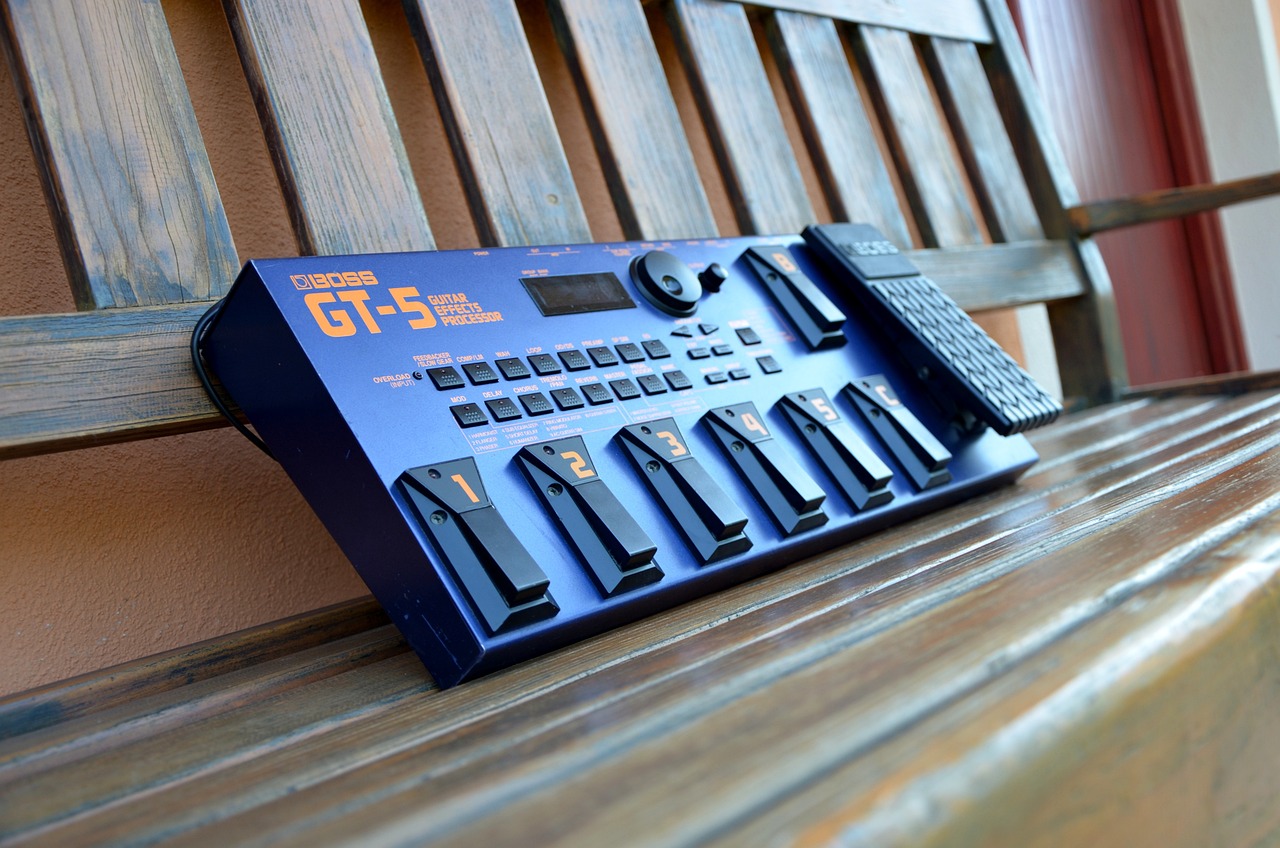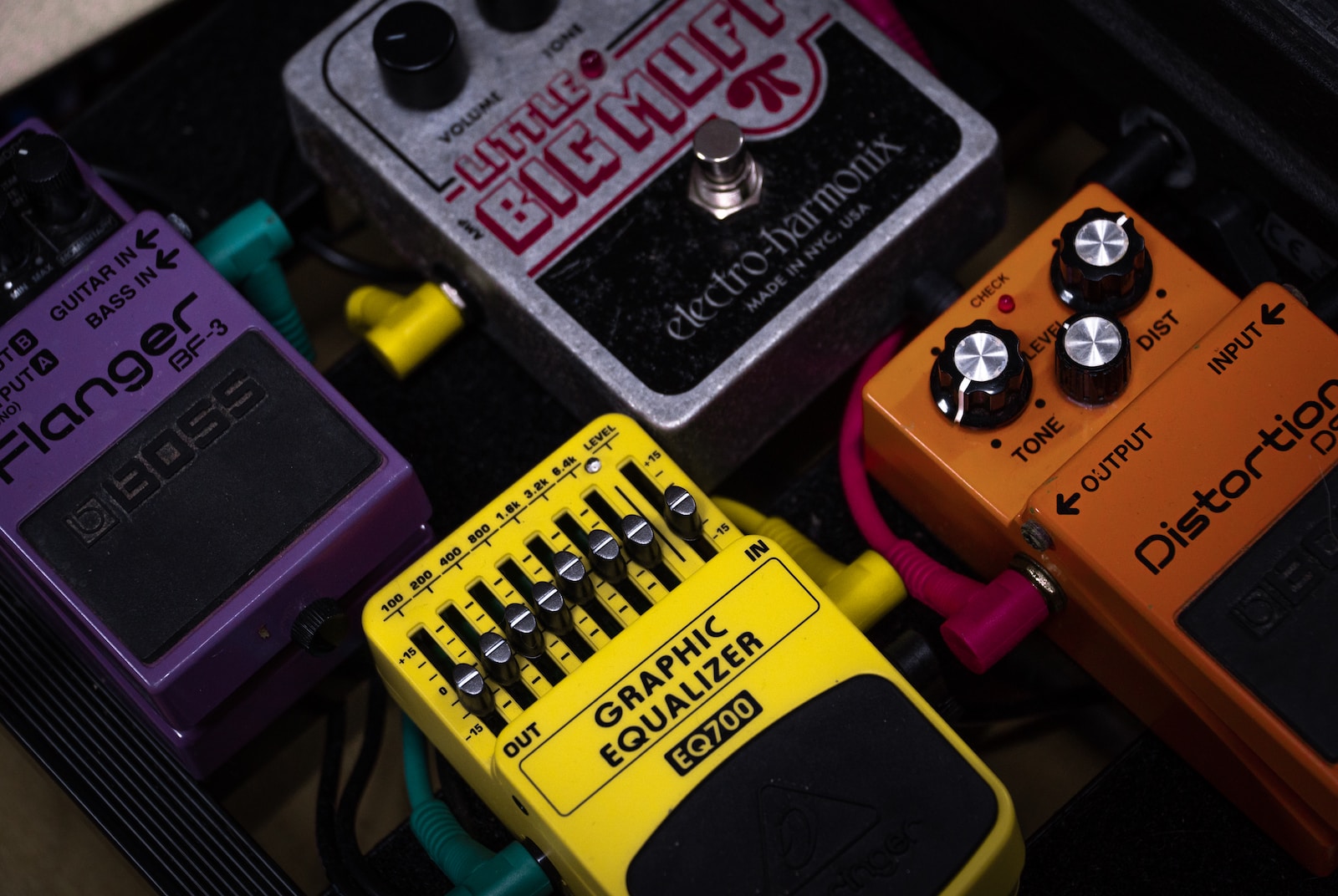
A guitar amp modeler and an effect are both devices used to modify the sound of a guitar, but they differ in their approach and functionality.
An amp modeler, is a device that emulates the sound and characteristics of different amplifiers, cabinets, and effects, all in one unit. Essentially, it is a digital device that recreates the sound of classic analog gear, such as vintage amps and effects, and provides guitarists with the flexibility to switch between different sounds in real-time. Amp modelers typically use digital signal processing (DSP) to recreate the characteristics of different amps and effects, but they do so with the aim of achieving a warm, analog sound.
On the other hand, a guitar effect is a device that modifies the sound of the guitar in specific ways. Effects can include distortion, delay, reverb, chorus, flanger, phaser, and more. Guitar effects can be individual pedals that plug into the guitar signal chain, or they can be built-in features of an amp.
The difference between amp modelers and effects lies in their approach to sound modification. Amp modelers are designed to emulate the sound of specific amps, whereas effects modify the sound in specific ways. Amp modelers are typically more versatile and provide a broader range of sounds, while effects are often more specific in the sounds they produce.
Another difference is that amp modelers provide a more holistic approach to tone-shaping, as they recreate the sound of a complete amp and cabinet rig. In contrast, individual effects offer more specific and focused tone-shaping. Amp modelers typically offer a variety of amp and cabinet models, while effects pedals offer more specific effects, such as a specific type of distortion, chorus, or delay.

Different amp modeling methods
There are several methods of amp modeling, each with its advantages and disadvantages. Here are some of the most common methods of amp modeling:
1. Digital Signal Processing (DSP) Modeling: This method uses digital algorithms to recreate the sound of an amplifier or effect. The digital signal processing analyzes the original analog signal and applies mathematical algorithms to recreate the sound of the amp or effect. This method is commonly used in software and hardware units, including digital amps and multi-effects processors. The advantage of this method is that it can produce a wide range of sounds, and it’s easy to update and upgrade the software. However, some players feel that the sound produced by DSP modeling can sound too digital or synthetic.
Example of Digital Signal Processing (DSP) Modeling:
- Line 6 Helix multi-effects processor
- Fractal Audio Axe-Fx III digital preamp/FX processor
- Boss GT-1000 multi-effects pedal
2. Component Modeling: This method is similar to DSP modeling, but it models individual components of the amp or effect, such as the preamp, power amp, and speakers, separately. The individual components are then combined to create a complete model of the amp or effect. This method can produce more accurate and realistic sounds than DSP modeling, but it requires more processing power and can be more difficult to program.
Example of Component Modeling:
- Kemper Profiler digital amp profiler
- Positive Grid Bias Amp 2 software
- Two Notes Torpedo Captor X loadbox/DI with amp/cab modeling
3. Neural Modeling: This method uses artificial intelligence and machine learning to model the sound of an amp or effect. The system learns the characteristics of the original amp or effect and creates a model that can reproduce its sound. This method is relatively new and is used in some modeling amps and plugins. The advantage of this method is that it can create more accurate and realistic sounds than other modeling methods, but it requires a lot of processing power.
Neural Modeling:
- Neural DSP Archetype: Nolly plugin
- Headrush Gigboard modeling amp and effects processor
- Positive Grid Spark modeling practice amp
4. Physical Modeling: This method uses mathematical equations to model the physical properties of an amp or effect, such as the way sound waves propagate through the circuitry. This method can produce very accurate and realistic sounds, but it requires a lot of processing power and can be more difficult to program.
Physical Modeling:
- Yamaha THR modeling practice amp series
- IK Multimedia AmpliTube 5 software
- Avid Eleven Rack guitar preamp/FX processor
5. IR (Impulse Response) Modeling: This method uses a digital audio file that captures the sound of a specific amplifier or cabinet. The audio file, known as an impulse response, is then loaded into an IR loader or plugin to create the sound of the original amp or cabinet. The advantage of this method is that it can produce very accurate and realistic sounds, but it’s limited to the specific amp or cabinet that was recorded.
IR (Impulse Response) Modeling:
- Mooer Radar speaker simulator/IR loader
- Celestion Impulse Responses library
- Two Notes Torpedo Wall of Sound III plugin
In summary, an amp modeler is a device that recreates the sound of different amps and effects in one unit, with the goal of achieving an analog-like sound. In contrast, an effect modifies the sound of the guitar in specific ways, such as by adding distortion, delay, or reverb. Analog modelers offer more versatility and a broader range of sounds, while effects pedals offer specific and focused tone-shaping.

